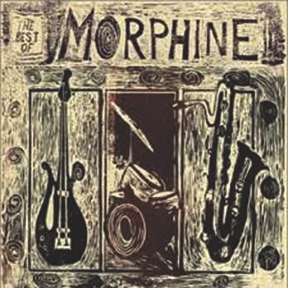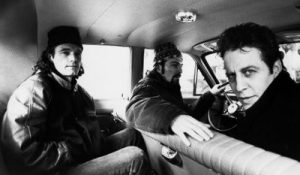
BY KAĞAN ÖZDEMİR (MBG/IV) kagan.ozdemir@ug.bilkent.edu.tr
Anyone who has been following this column since I started writing it will have been able to notice a pattern in my choice of topics: I try to point out the most different music possible. This time I will shed light on a somewhat forgotten and definitely unique band of one of the most fruitful decades of music: the ’90s.
Many of us know and love the music of the ’90s. I know for sure that when I bring up the word “nineties,” one or more of the following themes, events and people come immediately to mind: the rise of grunge; Nirvana; the unfortunate death of Kurt Cobain; MTV broadcasting actual music rather than pregnant teenagers or the lifestyles of prodigal “stars”; brave artists like Sonic Youth or Dinosaur Jr., etc. – and for a good reason. The ’90s were quite prolific, as they were the inevitable consequence of the ’80s, an even more important decade for music; but that is a topic for another column. However, all the elements that I listed above were only the tip of the iceberg, one of my favorite bands, Morphine, being among them.
Morphine was an American rock band, formed in 1989 by founding members Mark Sandman, Dana Colley and Jerome Deupree. The band released five successful albums during the ’90s and eventually disbanded following lead singer and frontman Sandman’s unfortunate death onstage on July 3, 1999. For those who have thought that the band is named after the pain-relieving medicine, I am sorry to say that it is not. Rather, the name is derived from that of the Greek god of dreams, Morpheus. Now that I have given the boring encyclopedic background, here comes the exciting information about Morphine.

First of all, the band uses no guitars, which is quite uncommon for a rock band. Instead, the guitars are replaced by the saxophone, which gives a unique, aggressive but also mellow and dreamy feeling. Since the saxophonist, Colley, had to substitute for the guitars, he explored very different ideas, such as playing the double saxophone or playing through a wah pedal. In addition to that, the band does not have a regular bass guitar. Substituting for it is a unique invention of Sandman’s: a two-string bass guitar, tuned to a fifth, played with a guitar slide. Together, these two unique approaches to instrumentation yield Morphine’s mellow, mature and at times aggressive sound. The bass and saxophone are accompanied by jazz-inspired drums.

However, these unusual features are not the sole reason for the band’s success; also important are the lyrical themes that they chose to explore. Sandman wrote about the moments of life that are filled with the most emotion; he wrote about love, lust, broken hearts, missing out on life, one’s need to abandon everything and leave, and even getting stabbed in the chest (something he had personally experienced). Basically, he wrote lyrics that everyone could connect to their own lives. Thus, Morphine’s style was perfectly and concisely described by Sandman as “low rock.”
As I always say, it never suffices to just explain music with words. Even though I try my best here, I am far from being objective. So, here are my song recommendations to get into the music of Morphine:
1) Radar – The song starts quite aggressively, not letting the listeners prepare themselves. The tense drumbeats are accompanied by loud saxophones and the slide bass, which never gives the listeners a break from the nervousness. However, when the song finishes, one has gotten rid of any pain. It truly does justice to the name Morphine.
2) Cure for Pain – Maybe the most famous Morphine song, which really captures the essence of the band. Their dreamy quality is very evident in this track. Instead of the aggressive, loud saxophones we encounter in “Radar,” the saxophones in this song are smooth and dreamy. “Cure for Pain” encapsulates what the band tried to express in their choice of name.
3) Honey White – The track starts in a manner that causes the listener to think that there is an incomplete job that should be finished. It is so energetic and aggressive that it can be considered Morphine’s response to the rising grunge culture. This song alone would put Morphine on the list of the best rock bands of all time.
4) Rope on Fire – This song includes heavy oriental melodic motifs in addition to Morphine’s signature musical style. The resulting feeling is like dreaming of living in Andalucia, where two seemingly opposite sides live in harmony with each other in a way that transcends reality.
5) French Fries With Pepper – There is no point in explaining the musical themes in this song; it must be experienced. However, if one were to try to describe the feeling it evokes, it would be like having a hypnagogic dream: a dream right before one falls asleep, where thoughts float around without any restrictions.
The conclusion is that one should not overlook Morphine when the music of the ’90s is being considered. They were among the era’s unique bands, who brought their best to the culture and made many nights bearable. One should definitely try this musical equivalent of a painkiller.
